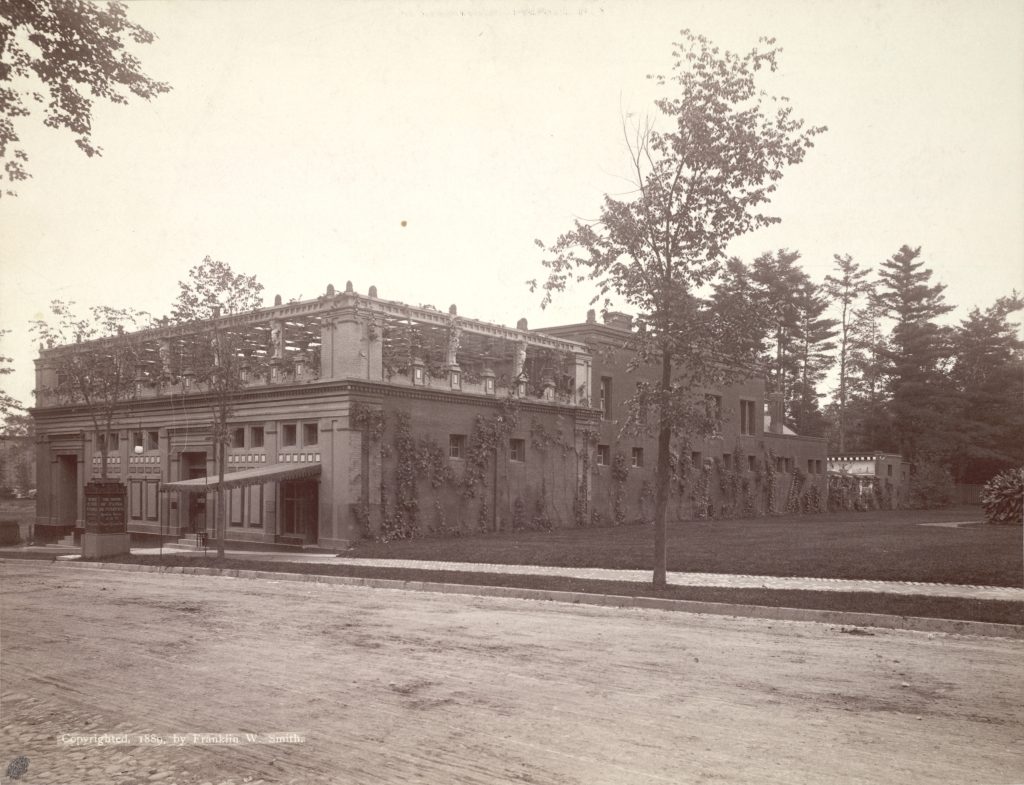Many thanks to Dr. Katharine von Stackelberg for coming to talk with me about ancient gardens and how the Pompeia in Saratoga Springs, New York, and the Getty Villa in Malibu, California, were two highly innovative and original reinterpretations of ancient houses, villas and gardens.
The Pompeia, Saratoga Springs

One can see that gardens were integral to the exterior, just as they were to the interior.


The sculptures and paintings clearly draw on ancient examples. These historical images and other are available from Cornell University’s digital collections.
The Getty Villa in Malibu
The Getty Villa in Malibu (CA) is the 20th-century cousin of this building, designed to house J. Paul Getty’s collection of art, it was modeled on the Villa of the Papyri in Herculaneum (Italy), which was destroyed by the eruption of Vesuvius in 79 CE. Visits to the villa are free, but you have to reserve parking, but it is well worth the visit.
Also I think that atrium needed a quick definition: in a Roman house or villa, the atrium is the central room which had a small opening to the sky.
Bibliography
Bowe, Patrick, and Michael D DeHart. Gardens and Plants of the Getty Villa. Los Angeles: J. Paul Getty Museum, 2011.
Jashemski, Wilhelmina F. et al. Gardens of the Roman Empire, Cambridge: Cambridge University Press, 2018.
Lapatin, Kenneth D. S. “The Getty Villa: Art, Architecture, and Aristocratic Self-Fashioning in the Mid-Twentieth Century.” In Pompeii in the Public Imagination from Its Rediscovery to Today / Ed. by Shelley Hales and Joanna Paul., 270–85. Oxford: Oxford University Press, 2011.
von Stackelberg, Katharine T. The Roman Garden: Space, Sense, and Society. London: Routledge, 2009.
von Stackelberg, Katharine, “Reconsidering Hyperreality: ‘Roman’ Houses and Their Gardens” in Housing the New Romans: Architectural Reception and Classical Style in the Modern World, eds. Katharine von Stackelberg and Elizabeth Macaulay-Lewis, eds., 232-68. New York: Oxford University Press, 2017.


